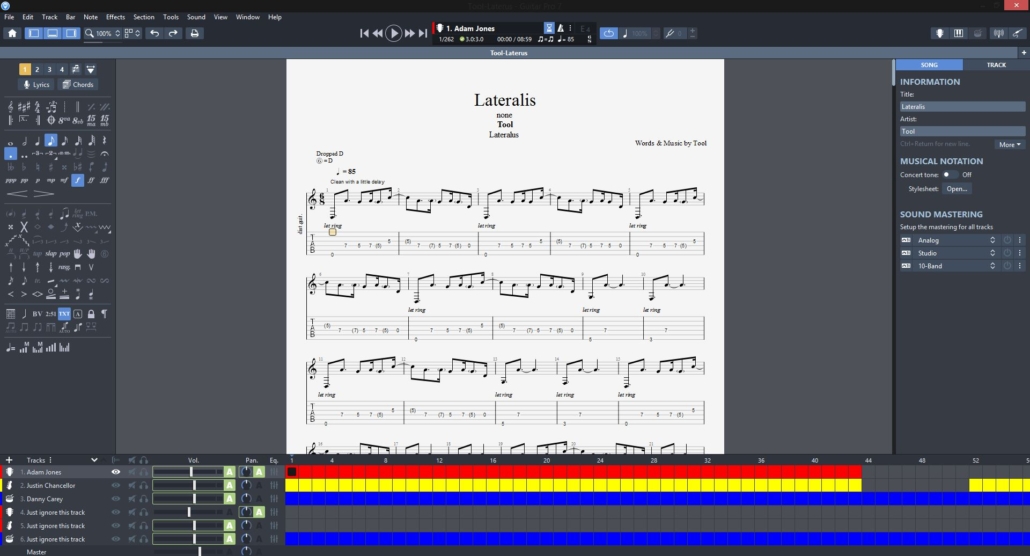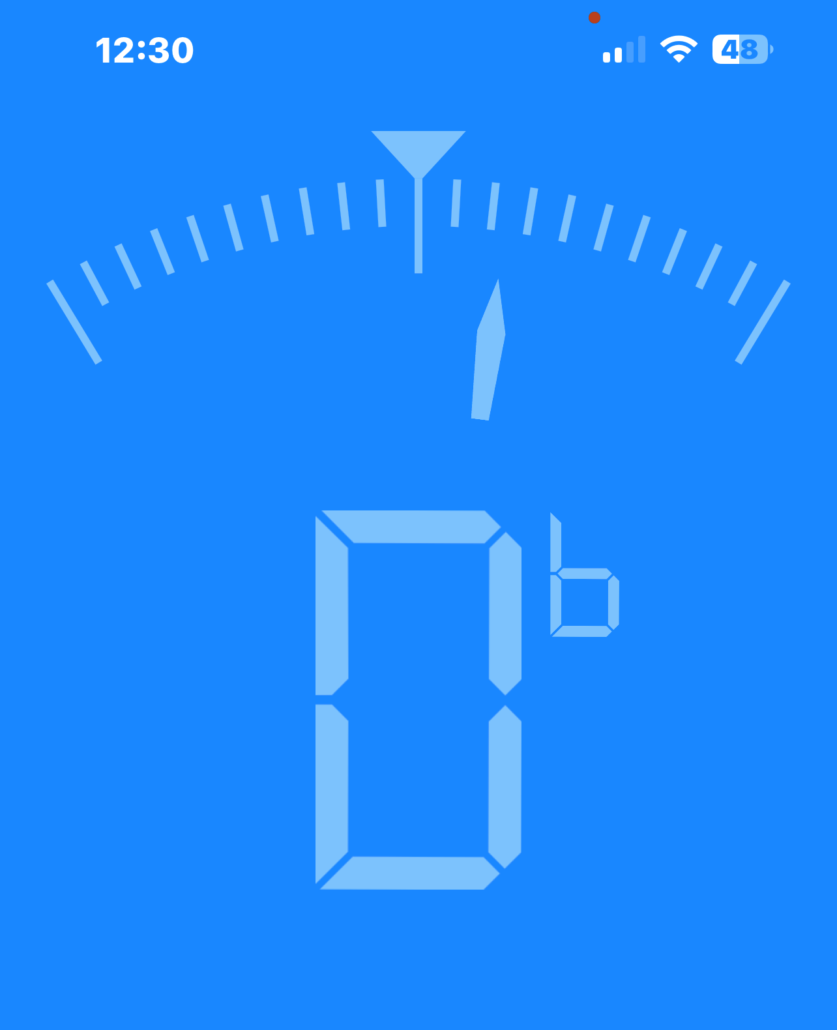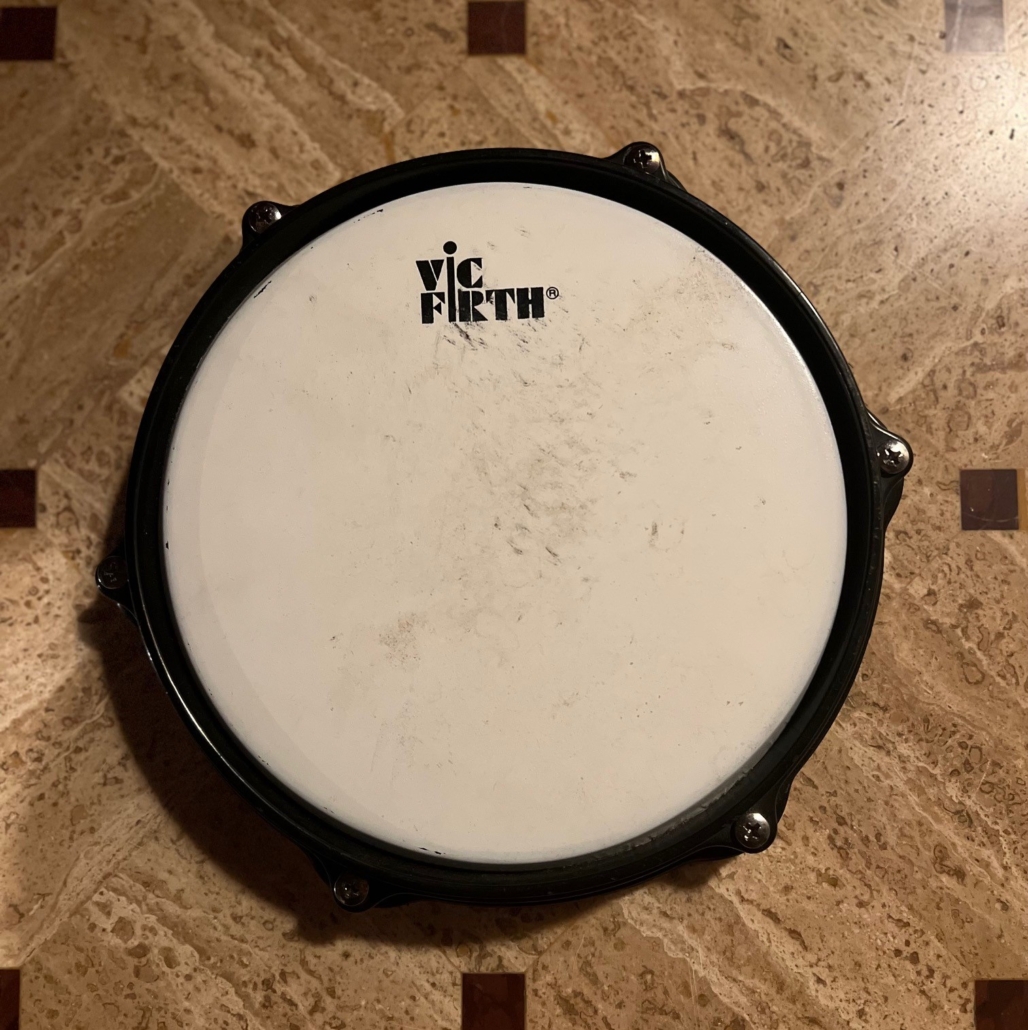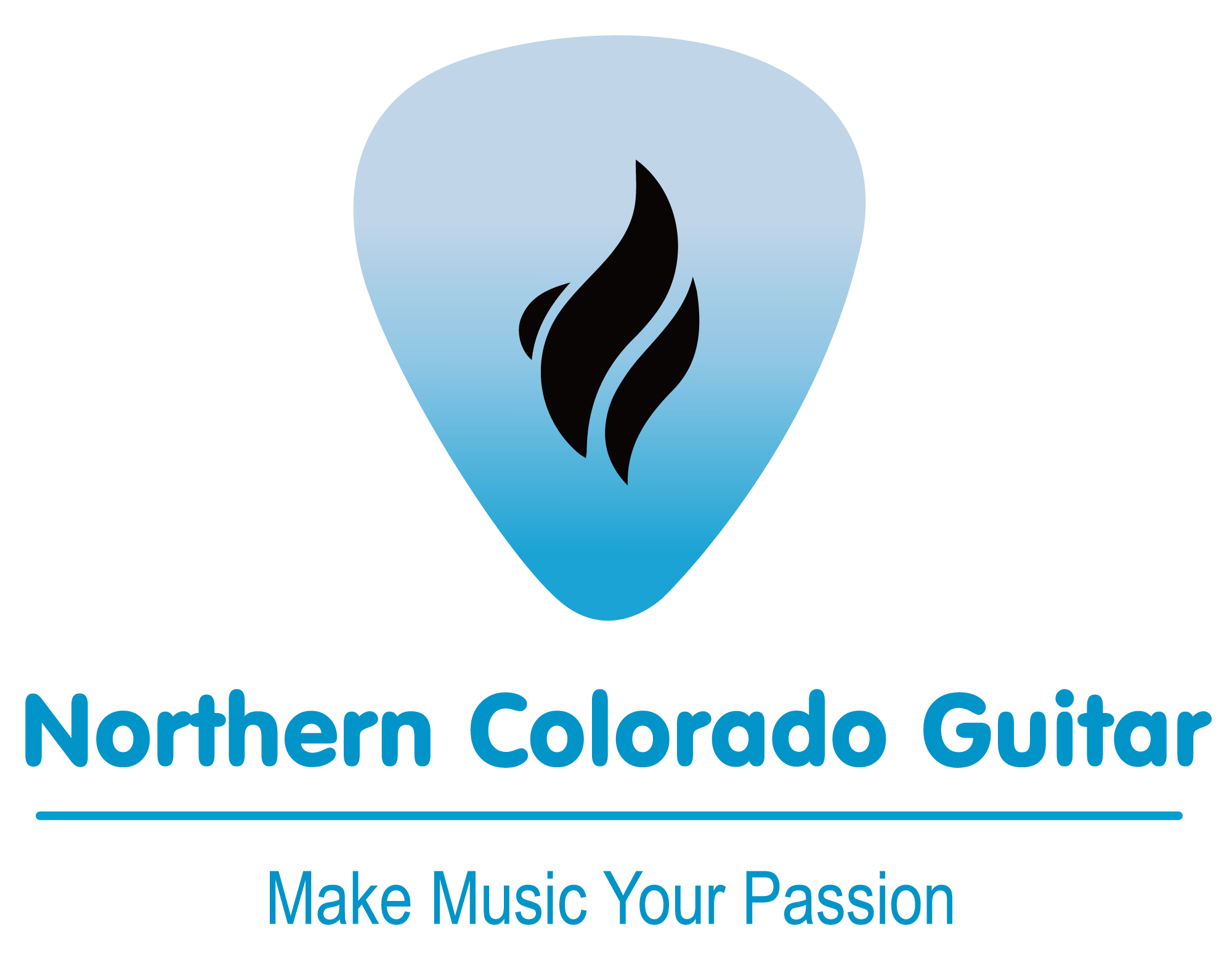Music Studio in 10 Years
Where do I see my music studio in 10 years?
I read an article that inspired me to think about where my music studio may be in 10 years. I’m pretty excited about it.
I’ve been teaching music for over 20 years, and absolutely love it. The studio will always be a work in progress since there are new technologies and gadgets hitting the market all the time. But trying things out is a lot of fun! My goal has always been to put together a state-of-the-art facility where students of all ages and skill levels can come to learn and grow musically.
The Big Projects
First and foremost, it would be so nice to completely finish and soundproof the studio. Having a lower floor bathroom, drum riser, and a control room would really complete it nicely. I also want to make sure that the soundproofing is top-notch so the neighbors can finally get some sleep. It would be a lot of fun to eventually include workshops for songwriting and music theory.
Exploring new ways to use technology during the lessons is always inspiring. It would be incredible to try virtual reality to give students the experience of playing in different venues. That technology is still in the infant stages, so it may be a little while before that will happen. Most importantly, creating an environment where the students are inspired to learn and grow musically in.
The Studio Layout Today
This is the current layout today. It is so much easier to create a balanced and full sound for jam sessions with most everything going through the sound board. The computer screens were the most recent addition and made a big difference when reading tablature and music charts. This is so nice for anyone who has a tough time seeing the smaller musical notation. These lights are usually only on during the one on one lessons, but this is what it looks like at the jam sessions. Some students do request different lighting during their lessons so they can really get into the music.
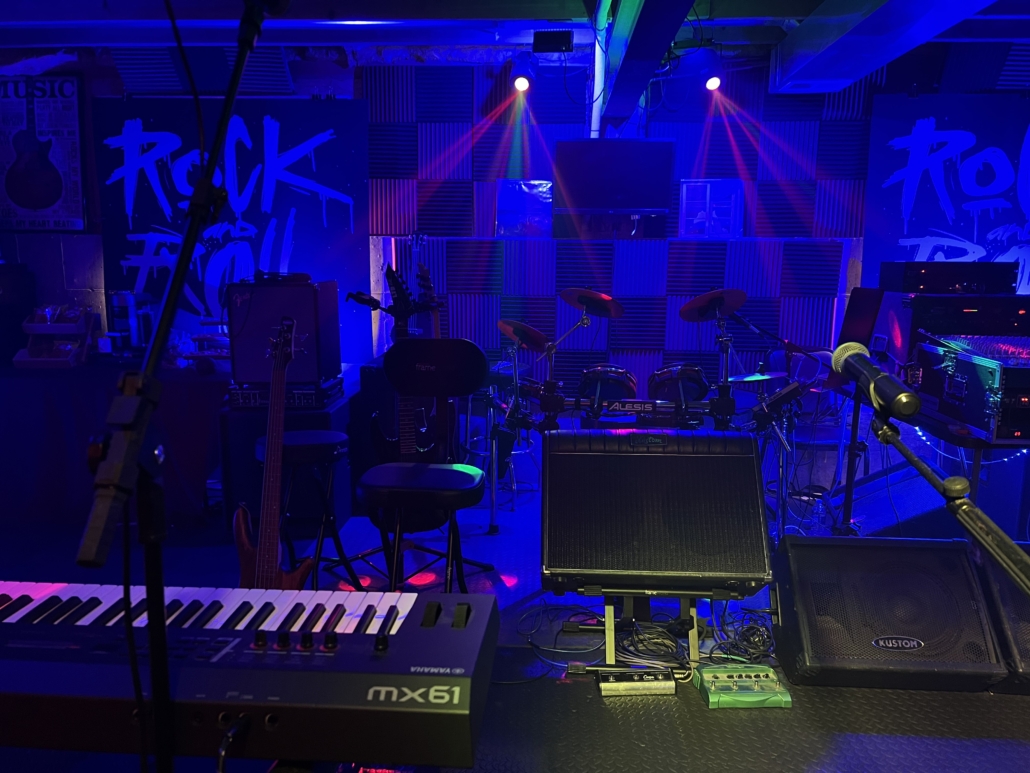
Current Studio Layout
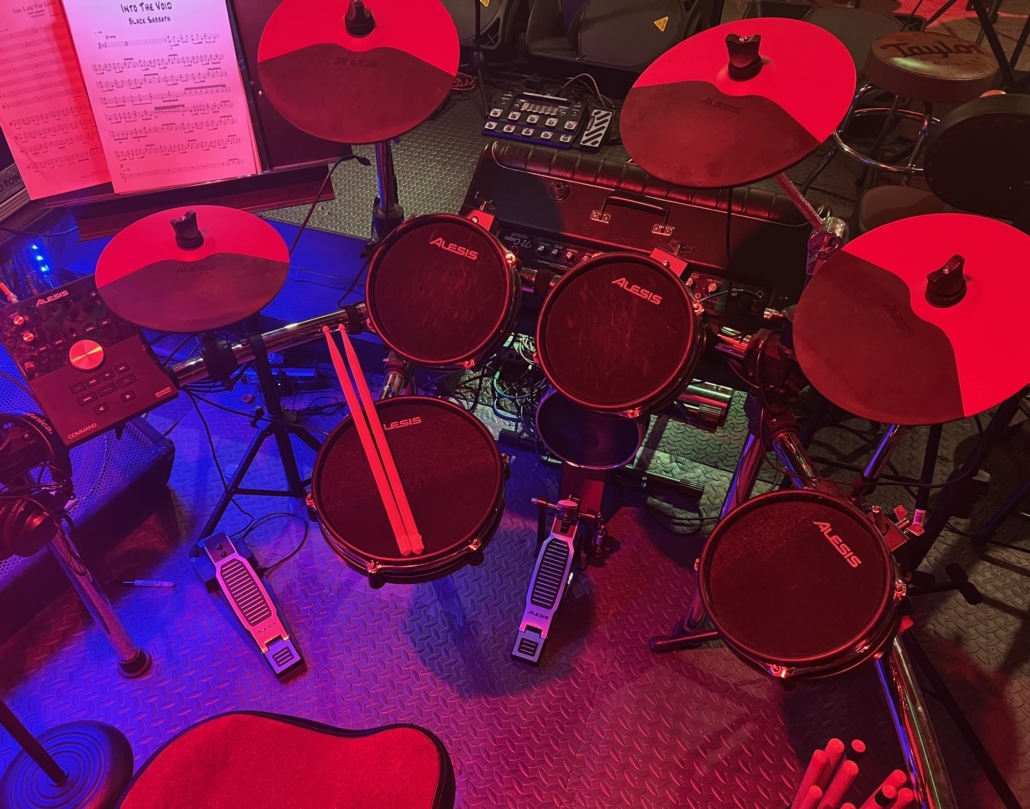
Behind the Drums
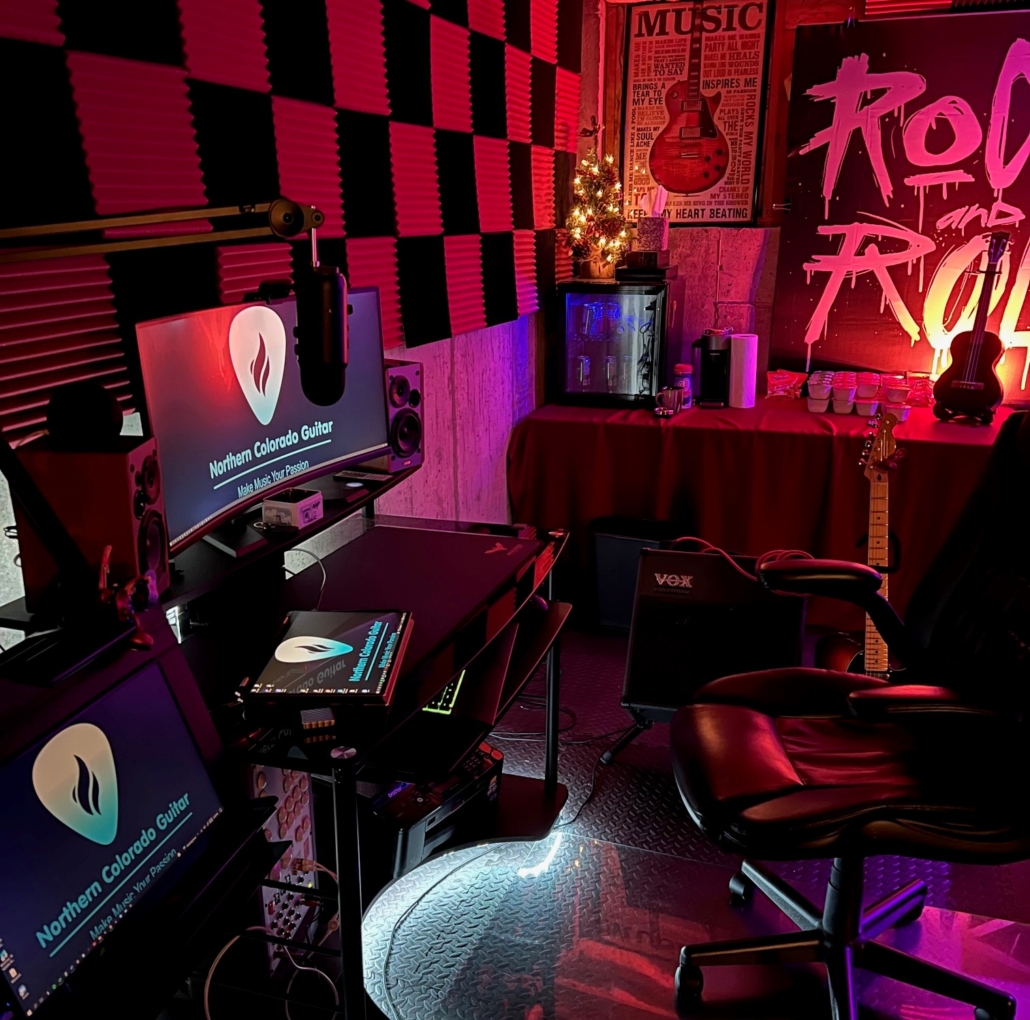
Monitor for the Students-Bottom Left
A Year Ago…
Adding rubber mats to the floor really helped both with comfort and sound. This was taken shortly after getting the new drum set and completely covering the floor in mats. Still needed some amplifier stands, stage monitors, and a fogger. This was probably the biggest improvement to the sound so far. The next step was video monitors for the students to use as a guide when at the jam sessions. Video monitors made things really easy when we did the blues jams. It allowed a ton of spontaneity if students wanted to try different keys or rhythms.
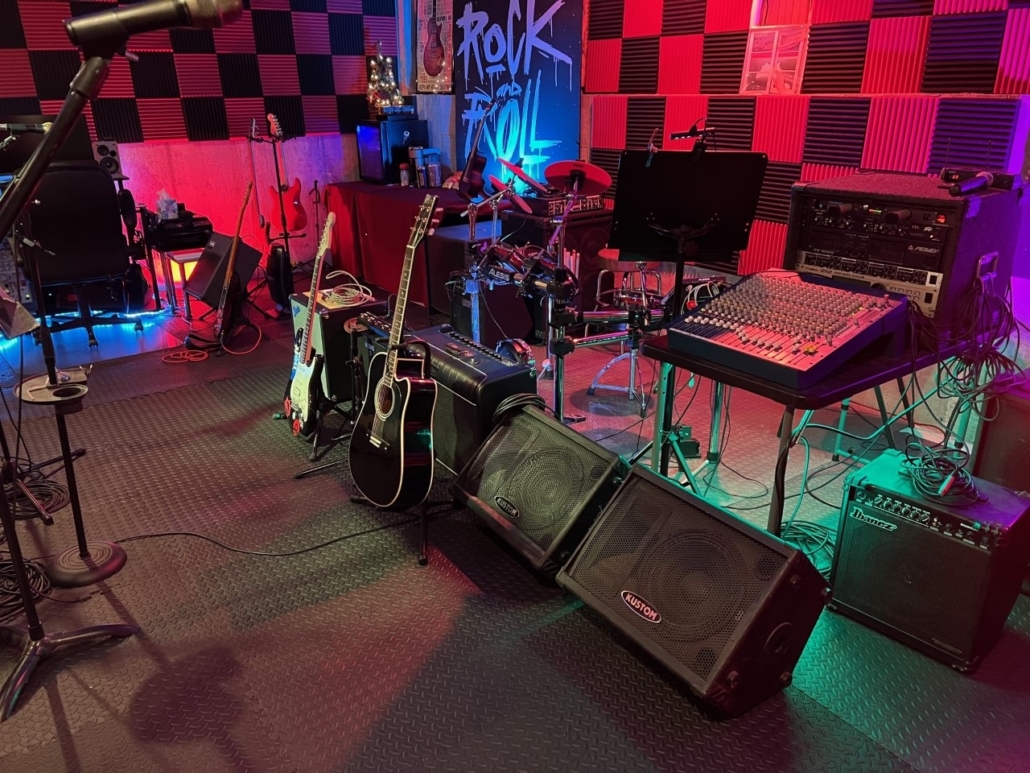
A year ago
A Few Years Ago…
The acoustic drums were always hard to keep at a low level and still create energy. Having added the acoustic panels helped tremendously. The next step after this was adding the electric drum set which made a huge difference. The sound can now be easily mixed, this really helped the beginner drummers out.
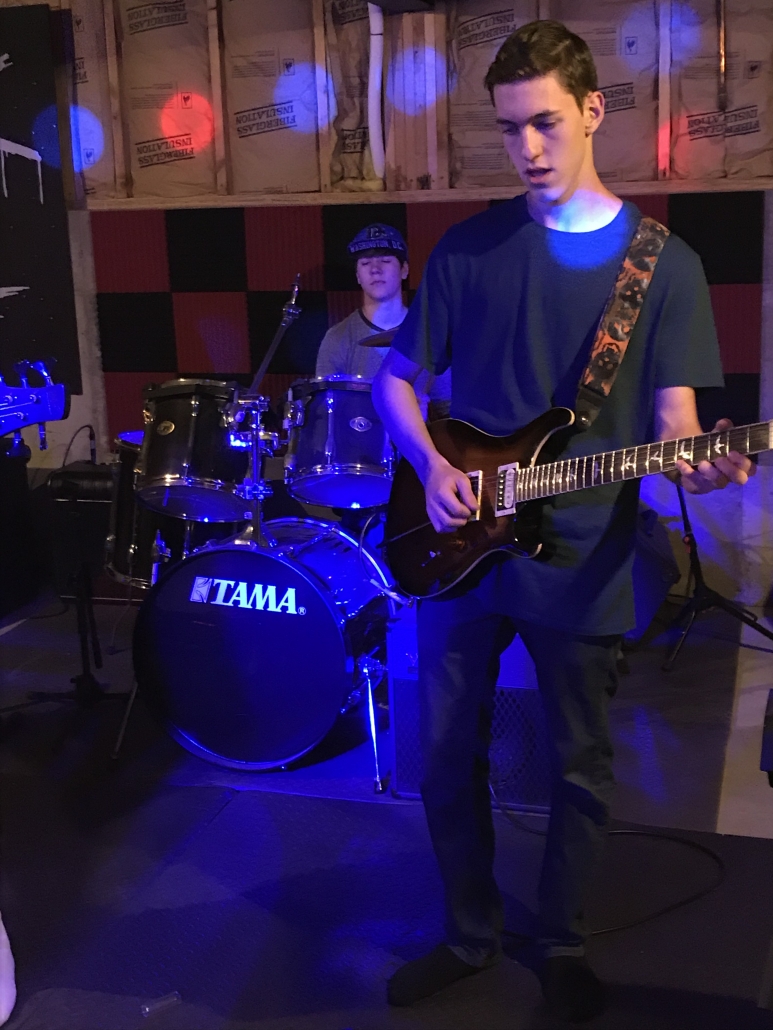
A few years ago
Several Years Ago…
I am almost embarrassed to say this, but initially I used beach towels in order to make it dark enough to get the lighting to work. We played on the concrete flooring surrounded by concrete walls. This was a nightmare since the sound bounced everywhere and was definitely hard to control. The students were awesome and did really well at the jam. But, it was a lot of sound in a small cement room.
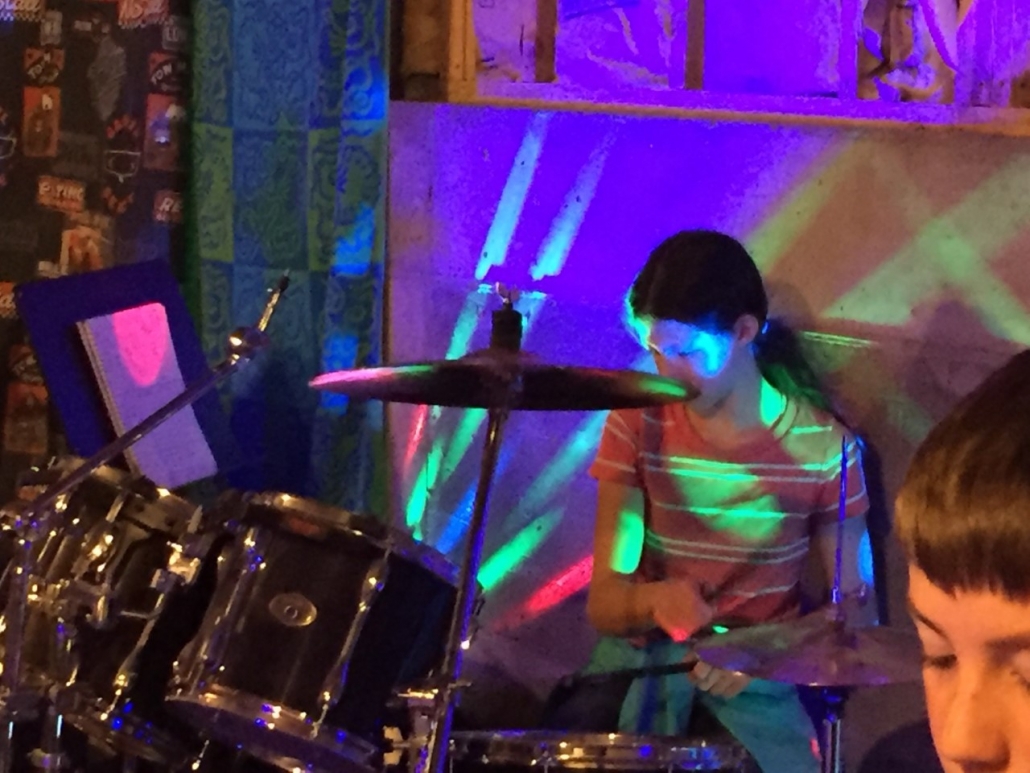
Jazmin (12) on Drums-She is in college now but still taking guitar lessons!
The Future
I doubt I’ll ever truly retire, so it will be interesting to see what technology does to the studio. I don’t plan to ever abandon the traditional one on one lessons set up. But trying out new things that inspire students to make music their passion is what makes teaching so much fun. If you are interested in trying out a lesson or have some ideas you’d like to share, feel free to contact me.

